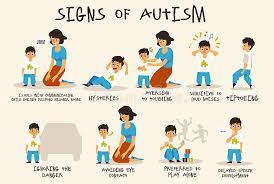Autism, a neurodevelopmental disorder, has intrigued researchers and caregivers for decades. In this article, we delve into the intricacies of autism, shedding light on its definition, characteristics, causes, and potential interventions.
Defining Autism Spectrum Disorder (ASD)
Autism Spectrum Disorder is a complex condition that manifests in various ways. To understand it better, let’s start with a concise definition. Autism is a spectrum of disorders characterized by challenges in social interaction, communication, and repetitive behaviors.
Unraveling the Characteristics of Autism
1. Social Interaction Challenges
Individuals with autism often find social interactions challenging. Their difficulty in understanding social cues and expressing themselves hinders the formation of typical social connections.
2. Communication Hurdles
Communication poses another hurdle. For those with autism, verbal and non-verbal communication skills may be delayed or absent. This can lead to frustration and isolation.
3. Repetitive Behaviors
Repetitive behaviors, such as hand-flapping or intense focus on specific interests, are common traits. These behaviors can serve as a coping mechanism but may limit adaptive functioning.
Investigating the Causes of Autism
Understanding the causes of autism is an ongoing pursuit in the scientific community. Research suggests a combination of genetic and environmental factors contribute to the development of ASD.
Genetics and Autism
Genetic factors, including inherited mutations and gene variations, play a significant role. Studies indicate a higher likelihood of autism in individuals with a family history of the disorder.
Environmental Influences
Environmental factors during pregnancy and early childhood also contribute. Factors like prenatal exposure to certain drugs or toxins may increase the risk.
The Role of Neurobiology
Neurobiological factors, involving brain structure and function, are crucial. Studies show differences in brain development and connectivity in individuals with autism.
Early Detection and Intervention
Early detection is vital for effective intervention. Recognizing signs of autism in infancy allows for early intervention, enhancing the potential for positive outcomes.
Signs in Infants
- Limited eye contact
- Delayed babbling or gestures
- Lack of response to name
Early Intervention Strategies
Interventions may include speech therapy, occupational therapy, and behavioral interventions. Tailoring approaches to individual needs is crucial for success.
The Myths and Realities of Autism
Myth: Vaccines Cause Autism
Extensive research has debunked the myth that vaccines cause autism. Multiple studies show no causal link between vaccines and the development of ASD.
Reality: Diverse Spectrum
Autism is a spectrum, and individuals experience it differently. Recognizing the diversity within the spectrum is essential for understanding and acceptance.
Living with Autism: Challenges and Triumphs
Educational Challenges
Navigating the educational system can be challenging for individuals with autism. Inclusive education and tailored support are crucial for academic success.
Triumphs and Strengths
Autism also brings strengths. Many individuals excel in areas like mathematics, music, and visual arts, showcasing the diverse talents within the autism spectrum.
Supporting Individuals with Autism
Community Inclusion
Creating inclusive communities fosters acceptance and support. Educating the public about autism reduces stigma and promotes understanding.
Family Support
Families play a central role. Providing support and resources for families navigating the challenges of autism is vital.
Future Directions in Autism Research
As research advances, new insights into autism emerge. Cutting-edge studies explore genetic markers, brain imaging, and personalized interventions, offering hope for improved understanding and support.
Conclusion: Embracing Diversity
In conclusion, understanding autism requires a nuanced approach. By recognizing the diverse nature of the spectrum, promoting early intervention, and fostering inclusive communities, we can embrace and support individuals with autism.
Autism is not a barrier; it’s a unique way of experiencing the world, and with understanding and support, individuals with autism can thrive and contribute meaningfully to society.
